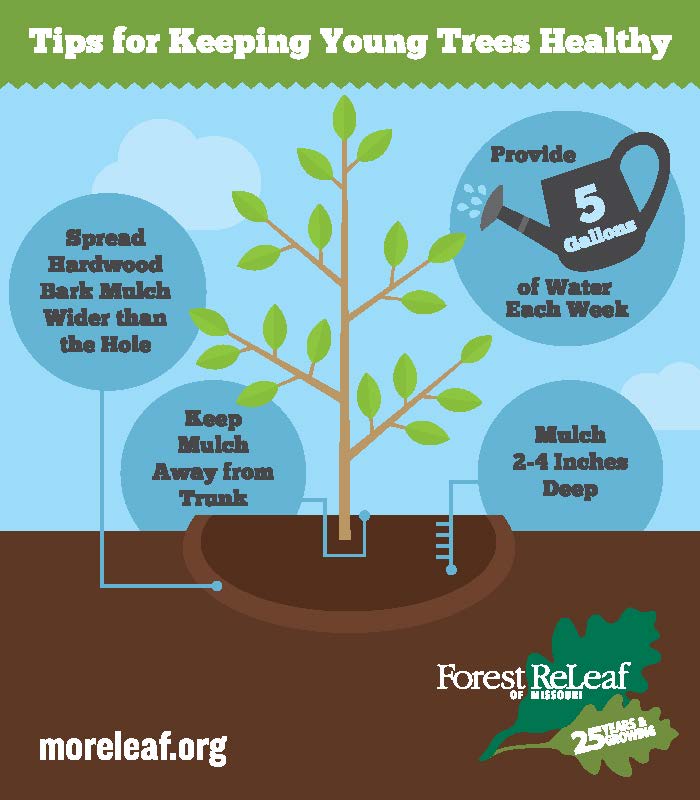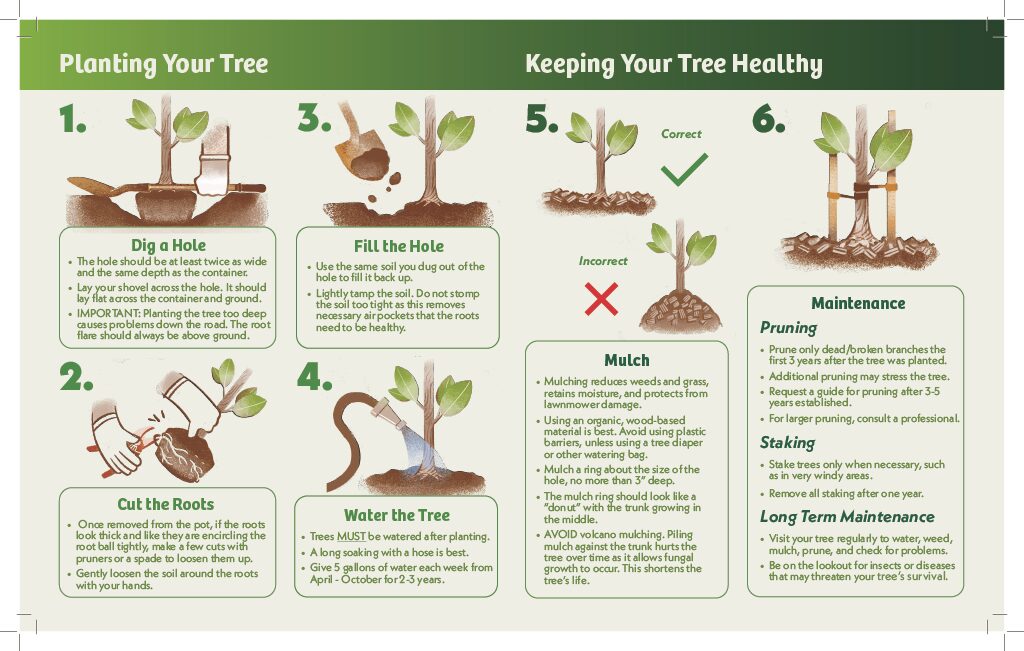How to Plant a Tree
Plan ahead:
- Select the right tree for the right place – is your site wet or dry? Sunny or shady? Are there power lines, buildings or other trees around? Make sure the tree you plant fits the site conditions, and make sure the site is big enough to accommodate the tree once it reaches maturity.
- Plant at the right time – spring and fall are the best times for planting, ideally when deciduous trees do not have their leaves. The middle of summer is probably the worst time as the heat is very stressful and the trees will require more water. Winter planting is okay if the ground is workable but heavy freezes can damage newly planted roots.

Once you’re ready to plant:
- Locate the root flare – the first roots to branch off from the trunk should be just above the soil level. You should be able to see the first inch or two of them before they reach down into the ground. Burying the root flare can lead to stem girdling roots and other problems. Planting too deep may be the single biggest preventable cause of premature tree death!
- Dig your hole – it should be at least twice as wide as the root ball of the tree (or the container it is in) and just deep enough that the root flare will sit above the soil grade around it. Do not dig too deep or backfill the bottom of the hole or the tree will likely settle after planting.
- Remove the tree from its container – carefully! Pull the tree straight out of the pot, not side to side. Cut the pot off if necessary. Now “rough up” the roots on the outside of the root ball that have started to grow in the shape of the pot. Set the tree in the hole and double check that it is at the right depth. Make sure it is straight!
- Backfill – replace the soil you removed around the tree, gently firming it with your hands without crushing it. Break up any large chunks and remove rocks and debris. You want to prevent large air pockets without crushing the soil too much. Do not place more than about an inch on top of the root ball. Leave a ring around the trunk exposed so the root flare is visible. When you are done the tree should be stable.
- Mulch – apply 3 inches of organic mulch over the bare soil. Wood chips, shredded bark or leaves are best. Do not pile mulch against the trunk. Good mulch rings should look like donuts, not volcanoes.
- Water – saturate the root ball and backfilled soil with a slow trickle of water. If the soil settles significantly you may need to add more to bring it to grade.


